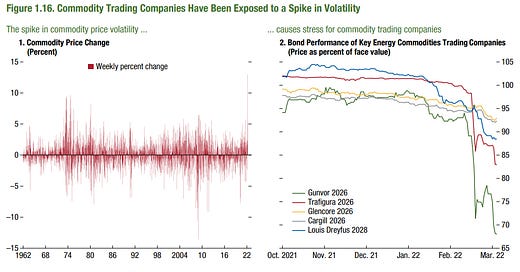A market driven by illiquidity
Commodity trading houses have always been prone to liquidity mismatches during times of stress. Physical commodities may take months to transport to the end user, while margin calls on futures contracts must be met immediately.
Russia’s invasion of Ukraine sparked the latest episode in a long history of managing periodic concerns over liquidity. The dramatic spike in volatility across commodity markets (the highest in 60 years), coupled with an increase in counterparty risk, created severe pressures across commodity financing and futures markets.
In a similar vein to ‘normal’ physical commodity markets, trading firms and financial institutions perform a wide variety of actions in the EU’s carbon market. Fundamentally though they help to provide liquidity to obligated emitters, typically small to medium sized utilities that are unable to operate their own sophisticated carbon trading desk. Larger energy firms tend to cover their own compliance needs while also carrying out some of the activities that non-obligated financial players provide.
For example, many firms conduct carry trades, providing liquidity and enhancing market efficiency. This can involve purchasing carbon allowances at auction and then selling them on in the secondary market or in support of different vintage (i.e. underpinning forward contracts). The degree to which financial players are involved in the market has varied over time, depending on overall market conditions and the development of the carbon price.
Over the past few months, the influence of financial players on the EU carbon market appears to have taken another turn as both regulatory and funding concerns have pushed them further away from the futures market, and towards the more opaque OTC market.
This could mean much less market transparency and significantly more volatility for carbon market investors, particularly in the event that it suffers its own liquidity mismatch.




